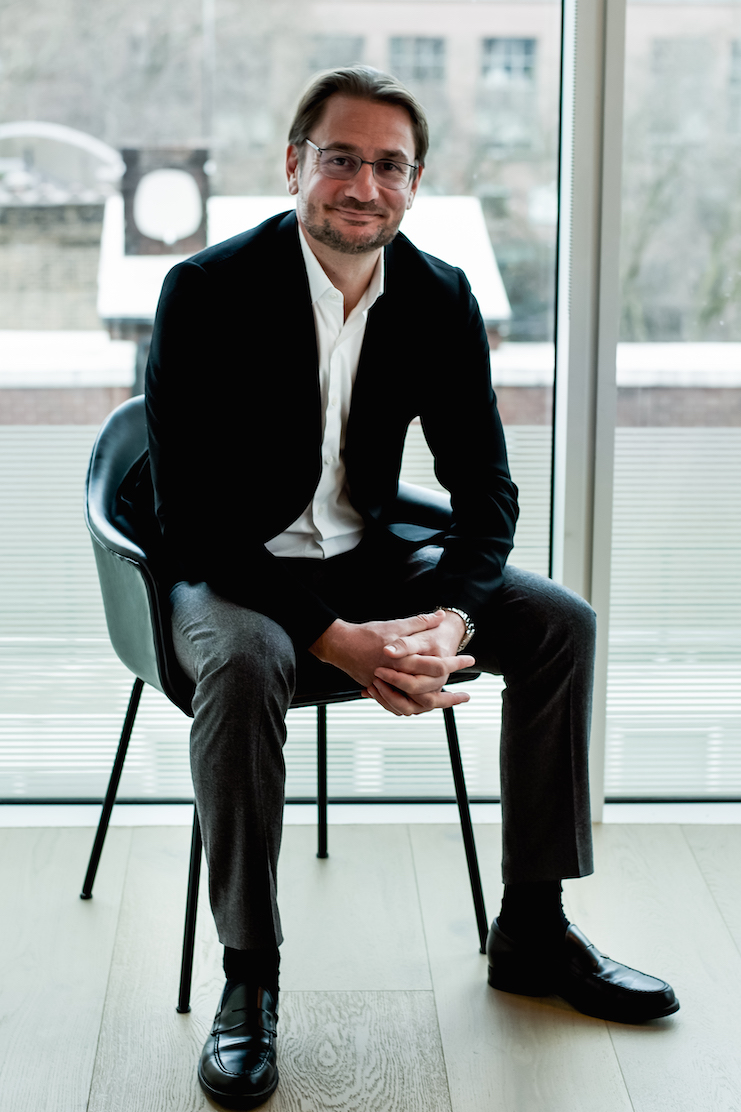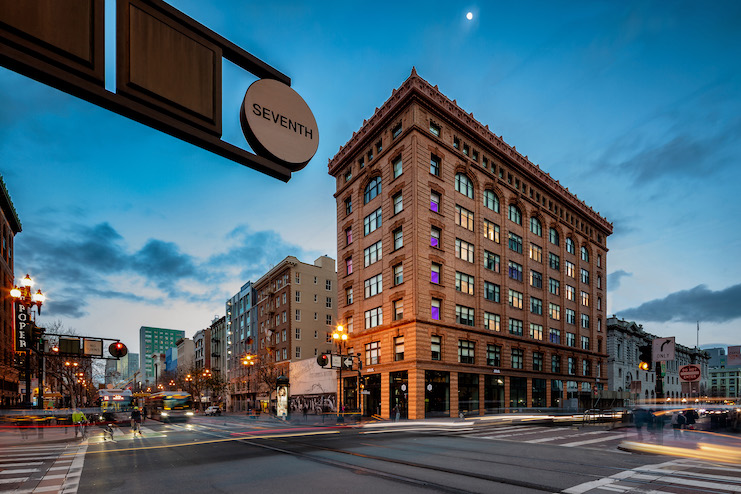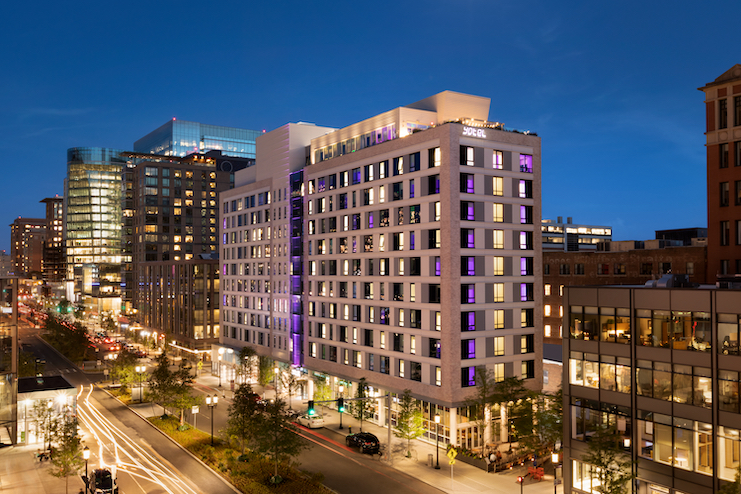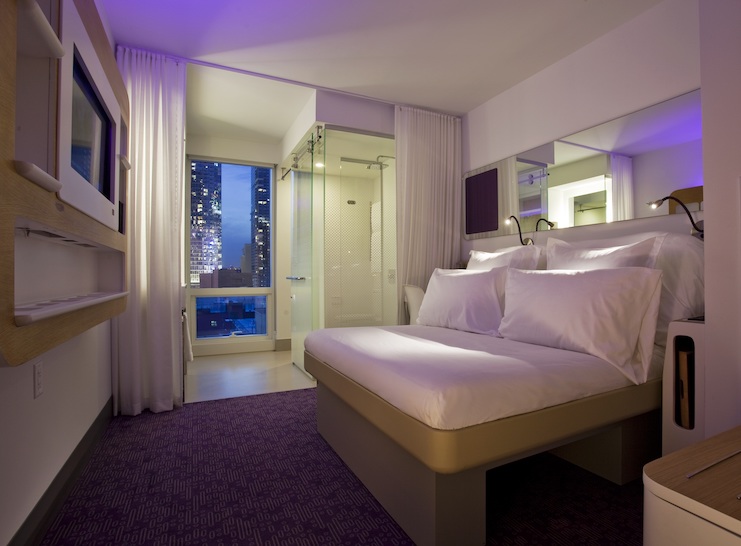 YOTEL, a global hotel brand that aims to redefine luxury hospitality with technology, space-saving design, and a more affordable price-point, is rapidly scaling its brands in the United States. Since YOTEL opened its first U.S. property seven years ago in Hell’s Kitchen in Manhattan, the brand has added projects in Boston, San Francisco, Miami, Washington, D.C., Atlanta, Denver, and Park City, Utah, among other locations, and launched its extended-stay YOTELPAD brand. YOTEL CEO Hubert Viriot told LODGING about the company’s U.S. expansion plans, how it adapted its short-stay, “cabin” model into longer-stay “pads”, and the brand’s approach to technology.
YOTEL, a global hotel brand that aims to redefine luxury hospitality with technology, space-saving design, and a more affordable price-point, is rapidly scaling its brands in the United States. Since YOTEL opened its first U.S. property seven years ago in Hell’s Kitchen in Manhattan, the brand has added projects in Boston, San Francisco, Miami, Washington, D.C., Atlanta, Denver, and Park City, Utah, among other locations, and launched its extended-stay YOTELPAD brand. YOTEL CEO Hubert Viriot told LODGING about the company’s U.S. expansion plans, how it adapted its short-stay, “cabin” model into longer-stay “pads”, and the brand’s approach to technology.
What are YOTEL’s expansion plans in the United States?
The United States is one of our key markets in our global portfolio. We identified New York as the right city to launch our brand. After opening that first property, we started scouting for new projects with a focus on global cities in the United States, showcasing our first U.S. property to investors across the country and demonstrating how efficient the building was, how different the brand was, and how excellent the returns were. That led us to develop new projects in Boston, San Francisco, and, more recently, we’ve been growing our pipeline quite significantly with projects in Miami, Washington, D.C., Park City, and Atlanta.
When you’re scouting locations, what makes a city and a specific neighborhood a good fit for YOTEL?
Right now in the United States and elsewhere, we’re primarily looking for larger urban hubs—either international hubs (like New York or Los Angeles) or larger domestic hubs. What’s important at this stage in our growth is to focus on cities with greater density because we think that’s where our concept is better delivered and where it makes sense for travelers and investors alike. Within those cities, we typically focus on three different types of locations: Where there is a larger aviation hub, we look at establishing a property at the airport itself. Our brand YOTELAIR is entirely focused on air passenger traffic, very short stays, and convenience. We’ve been working hard to roll out our YOTELAIR brand in the United States, but so far without success. Elsewhere, we’ve done quite well with airport projects.
The second type of location we’re looking for is Grade-A, prime locations. Very often, those locations provide significant premiums in terms of real estate prices, and that’s where we think that our concept—which is both efficient from a design and real estate point of view as well as from an operating standpoint—gets a lot of value on certain sites that are difficult to develop as residential, retail, or commercial properties, but where we can roll out our smaller cabins.

And then the third type of location is the more up-and-coming areas—areas going through significant gentrification, or where new tech companies are establishing themselves, or are being redeveloped as part of the greater city’s masterplan.
These are typically the three locations we look at within cities, and once we’ve occupied more space within these destinations, then we’ll be able to look at second-tier cities or re-entering the market with a second hotel. For example, in New York, we have a second hotel in development at the moment in Long Island City.
How does YOTELPAD differ from other extended-stay brands on the market?
We see a lot of new players in the short-term rental segment, but there is no control over the actual supply and the kind of experience that is being provided to those customers wishing to stay in this type of accommodation. As a result, it can often be a disappointing stay because the product happens to be very different from what was actually being marketed on the website or the service is not there. There’s a space to provide this promise to the client: brand recognition, quality assurance in terms of services, flexibility, facilities, and general design of the offerings.
And looking at the extended-stay segment, there’s nothing really exciting in this industry because it’s legacy brands, very traditional, very residential, not really experimental, and provides a practical solution and not an exciting solution. I think today’s travelers all around the world are all looking for some sort of experience.

So we thought, how can we design an extended-stay product that meets those requirements, stays affordable, is in line with what the consumer is expecting, and digitizes the customer’s journey? So, we created what we call Pads—small, compact units ranging from 300 to 400 square feet but very well-designed—pulling from what we’ve done for YOTEL in terms of design specifications as well as IT, allowing customers to fully control their stay, their reservations, and their services through their smartphone, and then, allowing those customers to stay as long as they want—from one day to one year.
What was your strategy for rolling out YOTELPAD in the United States?
When we came up with this concept, we thought, “we need to test it with developers.” We did a number of partnerships with existing and new partners to test the waters. The first were investors in Dubai, who were building a hotel as part of a mixed-use development project and they decided the residential component should be a YOTELPAD. Quickly after, our owners in Miami were also developing a mixed-use project with a YOTEL and a residential component. As a result, the building became a YOTEL and YOTELPAD. Many of the recent projects we signed are mixed-use between YOTEL and YOTELPAD. It’s very appealing for both developers and consumers alike because, within one building, you can have two different types of product—one a short-term residential product and the other an affordable, cool hotel.
What is your approach to technology?
We don’t use technology just for the fun of it—it has to be useful for the consumer, it has to be useful for the operator, it has to facilitate the overall distribution of the hotel, etc. We really try to pick the right technologies to create a better hotel from every stakeholder’s perspective.
We were the first brand to introduce kiosk check-in within our hotels. The best example is in New York because it’s a 713-room hotel with an average length of stay of about two nights and an average of 300 check-ins and 300 check-outs per day, which is a lot by any standard. At a traditional check-in/check-out counter, that would basically equate to long queues and a lot of people in the lobby waiting for their room—something you’ll never see in YOTEL in New York, where the average check-in/check-out process is a minute. Therefore, it’s a great experience for the consumers who don’t need to wait, who don’t need to queue, who can go quickly to their rooms. It’s also great from an operational perspective because then our crew—instead of focusing on basic tasks of checking in and checking out people—can spend their time helping our guests with their queries and organizing their day.
That’s definitely our approach to every technology we try to introduce within our hotels. What’s critical is to make sure that technologies are secured, robust enough, and useful for our various stakeholders.
“Our focus will always be: provide a great hotel accommodation at a great price and connect our customers with the cities around them. That’s what customers want and what investors want.”
What emerging technologies are you keeping an eye on?
There are lots, and as much as we’ve identified technology as a key component to our overall DNA and also our key focus in terms of innovation as a brand, it’s certainly difficult to keep track of everything. So what we’ve done a couple of years ago is establish a partnership with a technology incubator, Plug and Play. We identify areas as a brand where technology could help us. Through their own network, they can then put us in touch with all the other tech companies, startups, and local geniuses who come up with the ideas that can potentially answer the query we’re trying to solve.
In our case, what we’re really focused on is how we can make the customer journey even more flexible and easier. Ideally, we’d love our customers to be able to decide exactly when they want to arrive and when they want to leave, and allow them to basically control any interaction they have with us through a smartphone—being notified when you can check-in, order anything you may require from the hotel or other third-party service providers (like food and beverage), and create a very simple journey to make their trip much easier and, therefore, let them focus on what’s important to them. We’re also trying to figure out how we can make the booking journey even easier and simpler so our customers naturally will book directly with us.

We’re also trying to create a smarter cabin, mixing how we connect smart devices in the room with the consumer’s—smart lighting, smart TVs (which are already in our hotels), smart glasses, smart mirrors—and using these technologies to enhance the stay of our customers. A lot of these technologies are available, but still at a prohibitive cost. But we’re very interested in these trends because we believe that eventually, this will make the room of the future.
What do you think hoteliers should know about YOTEL?
When today’s travelers check into a hotel, what they want is a great hotel—not a great restaurant or a great spa or whatever. Our focus will always be: provide a great hotel accommodation at a great price and connect our customers with the cities around them. That’s what customers want and what investors want.
We cannot be good at everything. If we want to provide a great experience, we need to focus on what is expected from us.












It’s so awesome to read about companies that are more about the user experience. However, as a frequent traveler it is refreshing to learn of a company that works at improving things like quick check in/check out time!
The article is also well written.
Excellent website. A lot of useful information here.
I am sending it to a few buddies ans also sharing in delicious.
And of course, thanks for your sweat!